Curiosity Lands on Mars!
Advertisements:
The Mars Science Laboratory rover, Curiosity, on May 26, 2011, in Spacecraft Assembly Facility at NASAs Jet Propulsion Laboratory in Pasadena, California. The rover was shipped to NASAs Kennedy Space Center, Florida, on June 22, 2011. (Photo by NASA/JPL-Caltech)
The parachute for NASAs Mars Science Laboratory passed flight-qualification testing in March and April 2009 inside the worlds largest wind tunnel, at NASA Ames Research Center, Moffett Field, California. In this image, an engineer is dwarfed by the parachute, the largest ever built to fly on an extraterrestrial flight. It is designed to survive deployment at Mach 2.2 in the Martian atmosphere, where it will generate up to 65,000 pounds of drag force. The parachute has 80 suspension lines, measures more than 50 meters (165 feet) in length, and opens to a diameter of nearly 16 meters (51 feet). (Photo by NASA/Ames Research Center/JPL)
This test for the radar system to be used during the August 2012 descent and landing of NASA Mars rover Curiosity mounted an engineering test model of the radar system onto the nose of a helicopter. During the final stage of descent, NASAs Mars Science Laboratory mission will use a [sky crane] maneuver to lower Curiosity on a bridle from the missions rocket-powered descent stage. The descent stage will carry Curiositys flight radar. This test on May 12, 2010, at NASA Dryden Flight Research Center, in Edwards, California, included lowering a rover mockup on a tether from the helicopter to assess how the sky crane maneuver will affect descent-speed determinations by the radar. (Photo by NASA)
NASA has selected Gale crater as the landing site for the Mars Science Laboratory mission. The missions rover will be placed on the ground in a northern portion of the crater in August 2012. This view of Gale is a mosaic of observations made in the visible-light portion of the spectrum by the Thermal Emission Imaging System camera on NASAs Mars Odyssey orbiter. Gale crater is 96 miles (154 kilometers) in diameter and holds a layered mountain rising about 3 miles (5 kilometers) above the crater floor. The ellipse superimposed on this image indicates the intended landing area, 12.4 miles (20 kilometers) by 15.5 miles (25 kilometers). The portion of the crater within the landing area has an alluvial fan likely formed by water-carried sediments. The lower layers of the nearby mountain – within driving distance for Curiosity – contain minerals indicating a wet history. (Photo by NASA/JPL-Caltech/ASU)
In the Payload Hazardous Servicing Facility at NASAs Kennedy Space Center in Florida, technicians process the backshell for the Mars Science Laboratory. The spacecrafts backshell carries the parachute and several components used during later stages of entry, descent and landing of MSLs rover, Curiosity. (Photo by NASA/Jim Grossmann)
A closeup of Curiositys “head” atop the remote sensing mast. Instruments on the mast include two science instruments for studying the rovers surroundings and two stereo navigation cameras for use in driving the rover and planning rover activities. This photo was taken April 4, 2011, inside the Spacecraft Assembly Facility at NASAs Jet Propulsion Laboratory, in Pasadena, California, For scale, the width of the white box at the top is about 0.4 meter (16 inches). The circle in the white box is the laser and telescope of an instrument named Chemistry and Camera, or ChemCam. The instrument can pulse its laser at a rock up to about 7 meters (23 feet) away and determine the rocks composition by examining the resulting spark with the telescope and spectrometers. Just below that circle is the square opening for a wide-angle camera that is paired with a telephoto camera (the smaller square opening to the left) in the rovers Mast Camera, or Mastcam, which can take high-definition, full-color video with both “eyes”. Each of the two Mastcam camera heads has a wheel of filters that can be used for studying geological targets at specific visible-light and infrared wavelengths. Farther outward from each of the Mastcam cameras are circular lens openings for the rovers stereo navigation camera and its backup twin. (Photo by NASA/JPL-Caltech)
The hand lens imager is mounted on the arm of NASAs Mars rover Curiosity at the Jet Propulsion Laboratory in Pasadena, California, on April 4, 2011. The imager will take extreme close-up pictures of the planets rocks and soil, as well as any ice it may find there. (Photo by Damian Dovarganes/AP Photo)
Preparing for integration to the rover Curiosity, technicians help guide the rocket-powered descent stage over the rover at NASAs Kennedy Space Center Payload Hazardous Servicing Facility, on September 23, 2011. (Photo by Kim Shiflett/NASA)
At the Payload Hazardous Servicing Facility at NASAs Kennedy Space Center in Florida, integration is complete between the rocket-powered descent stage and Curiosity (tucked beneath), is complete. (Photo by Kim Shiflett/NASA)
In the Payload Hazardous Servicing Facility at NASAs Kennedy Space Center in Florida, technicians inspect beneath NASAs Mars Science Laboratory (MSL) mission aeroshell, (containing the rover Curiosity), which has been mated to the cruise stage. (Photo by Glenn Benson/NASA)
The Mars Science Laboratory (MSL) mission logo begins to take shape as technicians install it on the exterior of an Atlas V rockets payload fairing inside the Payload Hazardous Processing Facility in Florida, on October 29, 2011. (Photo by Jim Grossmann/NASA)
Standing atop a payload transporter on November 3, 2011, the Atlas V payload fairing containing NASAs Mars Science Laboratory spacecraft rolls down a darkened roadway during the early morning move from Kennedy Space Centers Payload Hazardous Servicing Facility to Space Launch Complex 41. (Photo by Kim Shiflett/NASA)
Inside the Vertical Integration Facility at Space Launch Complex 41 on Cape Canaveral Air Force Station in Florida, technicians using an overhead crane guide the final solid rocket motor into position for mating to the first stage of a United Launch Alliance Atlas V rocket. The Atlas V will carry NASAs Mars Science Laboratory (MSL) mission into space in a launch planned for November 26, 2011. (Photo by Jim Grossmann/NASA)
The Atlas V rocket set to launch NASAs Mars Science Laboratory mission is illuminated inside the Vertical Integration Facility at Space Launch Complex 41, where employees have gathered to hoist one of the final pieces to be integrated - the spacecrafts multi-mission radioisotope thermoelectric generator (MMRTG). The generator was lifted up to the top of the rocket and installed on the MSL spacecraft, encapsulated within the payload fairing. The MMRTG will generate the power needed for the mission from the natural decay of plutonium-238, a non-weapons-grade form of the radioisotope. (Photo by Dimitri Gerondidakis/NASA)
A United Launch Alliance Atlas V rocket carrying NASAs Mars Science Laboratory (MSL) Curiosity rover lifts off from Launch Complex 41at Cape Canaveral Air Force Station in Cape Canaveral, Florida, on November 26, 2011. (Photo by Terry Renna/AP Photo)
Mars Science Laboratory (MSL) mission members work in the data processing room beside Mission Control at the Jet Propulsion Laboratory (JPL) in Pasadena, California, on August 2, 2012 ahead of the landing of the Mars rover Curiosity. NASA said Thursday all was well ahead of its nail-biting mission to Mars, with its most advanced robotic rover poised to hunt for clues about past life and water on Earths nearest planetary neighbor. (Photo by Robyn Beck/AFP)
Artists concept of Mars Science Laboratory entry, descent and landing. (Image by NASA/JPL-Caltech)
Mars Curiosity Rover Comes in for Landing. (Video by ABCNews)
This artists scoreboard displays a fictional game between Mars and Earth, with Mars in the lead. It refers to the success rate of sending missions to Mars, both as orbiters and landers. Of the previous 39 missions targeted for Mars from around the world, 15 have been successes and 24 failures. For baseball fans, thats a batting average of .385. The United States has had 13 successes out of 18 attempts, or a [batting average] of .722. NASAs Curiosity rover, set to land on the Red Planet the evening of Aug. 5, 2012 PDT (morning of Aug. 6 EDT), will mark the United States 19th attempt to tackle the challenge of Mars, and the worlds 40th attempt. (Image by NASA/JPL-Caltech)
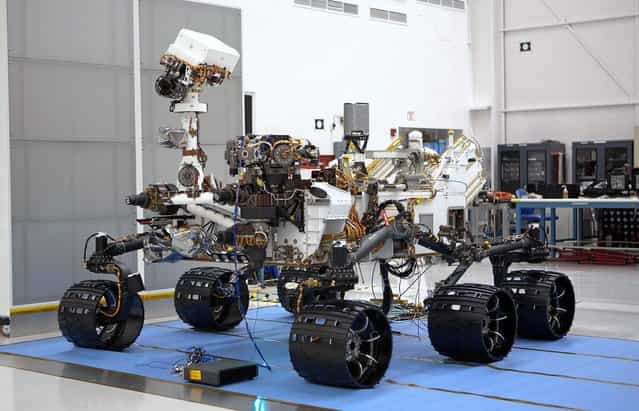
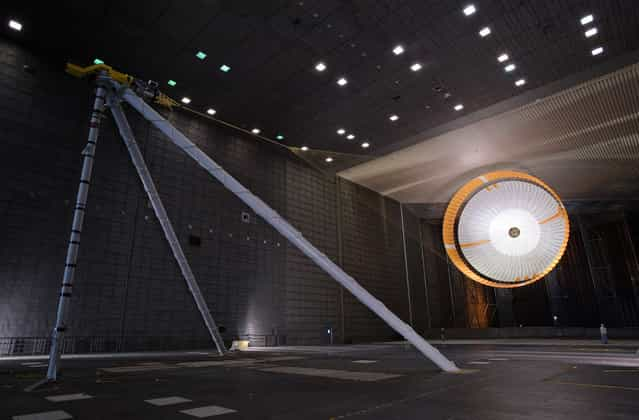
![This test for the radar system to be used during the August 2012 descent and landing of NASA Mars rover Curiosity mounted an engineering test model of the radar system onto the nose of a helicopter. During the final stage of descent, NASAs Mars Science Laboratory mission will use a [sky crane] maneuver to lower Curiosity on a bridle from the missions rocket-powered descent stage. The descent stage will carry Curiositys flight radar. This test on May 12, 2010, at NASA Dryden Flight Research Center, in Edwards, California, included lowering a rover mockup on a tether from the helicopter to assess how the sky crane maneuver will affect descent-speed determinations by the radar. (Photo by NASA) This test for the radar system to be used during the August 2012 descent and landing of NASA Mars rover Curiosity mounted an engineering test model of the radar system onto the nose of a helicopter. During the final stage of descent, NASAs Mars Science Laboratory mission will use a [sky crane] maneuver to lower Curiosity on a bridle from the missions rocket-powered descent stage. The descent stage will carry Curiositys flight radar. This test on May 12, 2010, at NASA Dryden Flight Research Center, in Edwards, California, included lowering a rover mockup on a tether from the helicopter to assess how the sky crane maneuver will affect descent-speed determinations by the radar. (Photo by NASA)](http://img.gagdaily.com/uploads/posts/app/2013/thumbs/000086e5_medium.jpg)
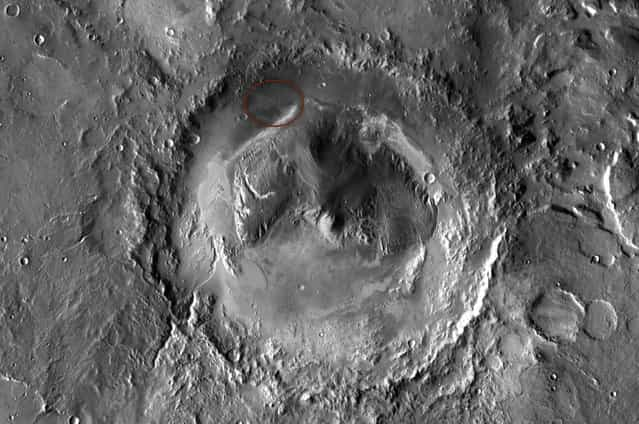

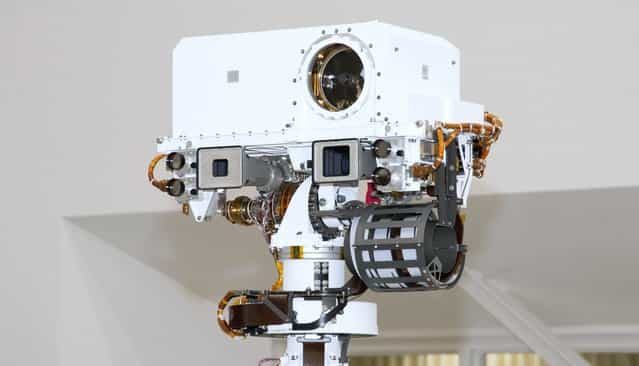

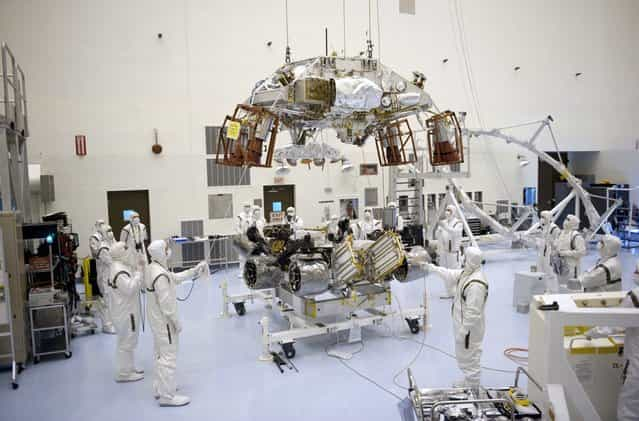
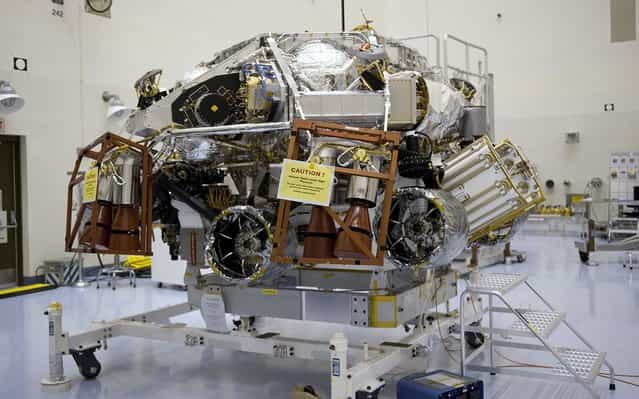

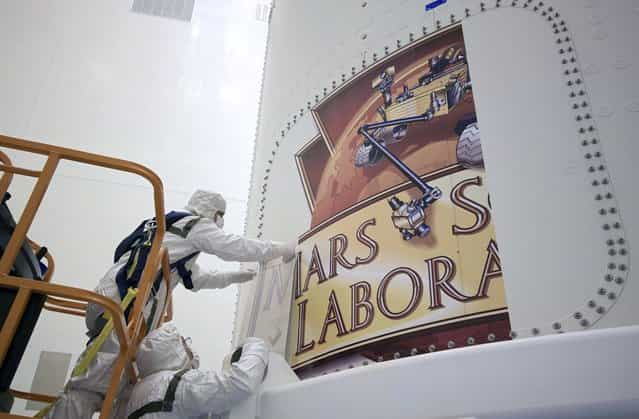
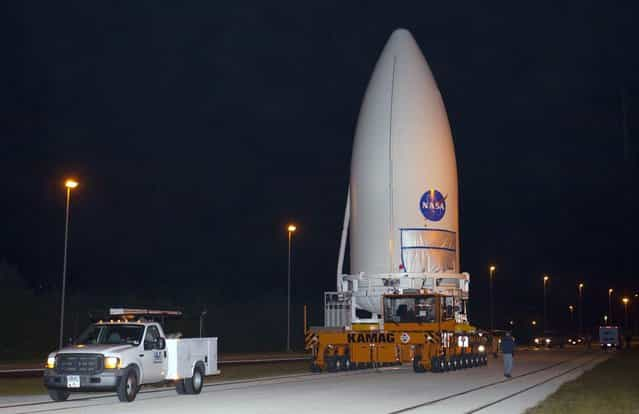
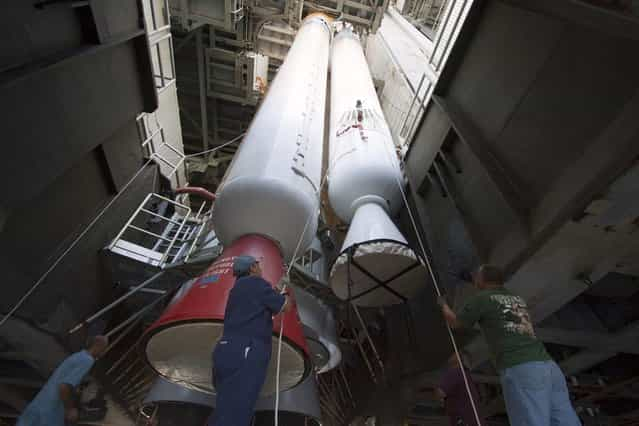
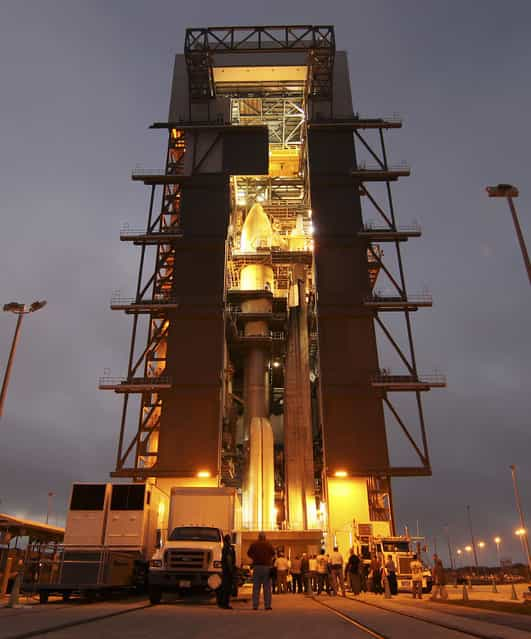
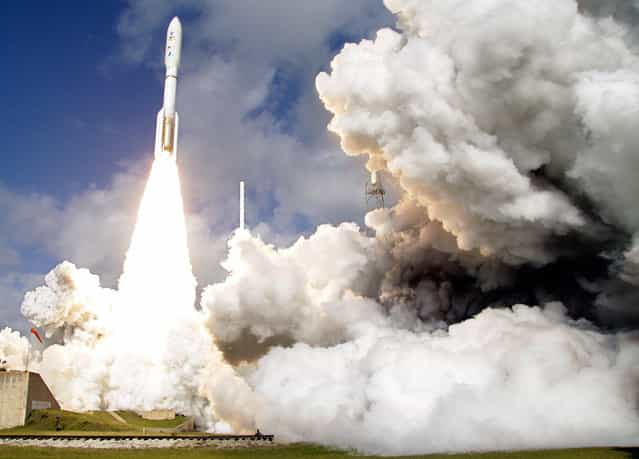

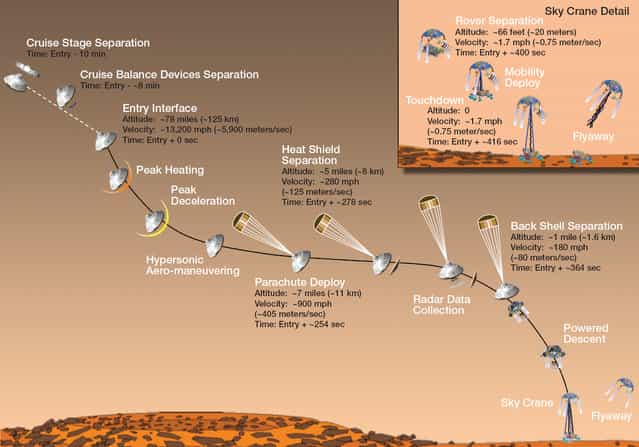

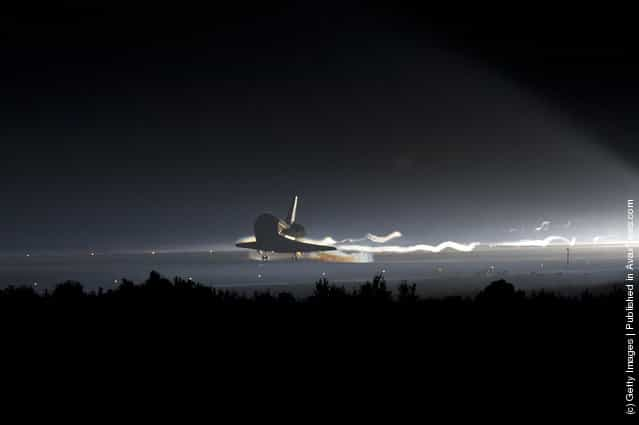
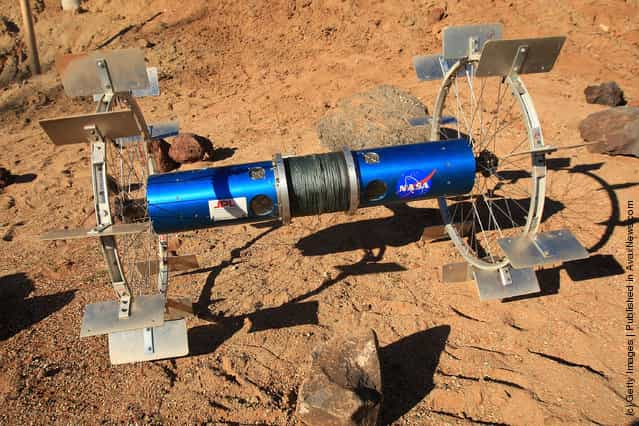
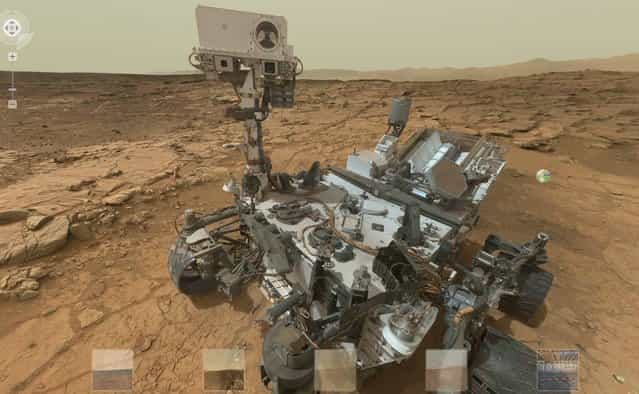
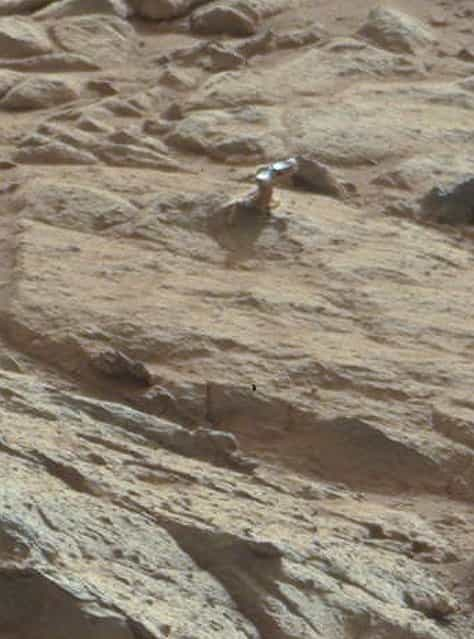
![Mars Curiosity Rover Team Looks Back at [Flower] Looks Ahead to Drilling Mars Curiosity Rover Team Looks Back at [Flower] Looks Ahead to Drilling](http://img.gagdaily.com/uploads/posts/app/2013/short/0000b133_medium.jpg)
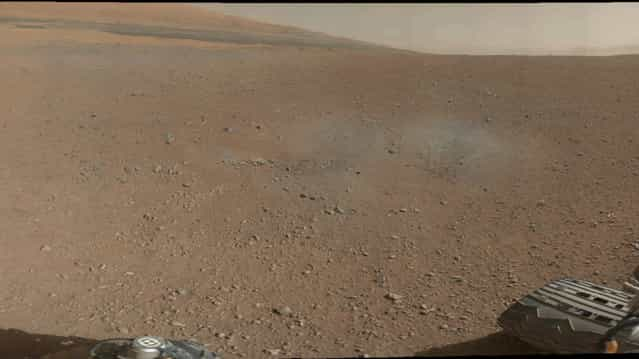
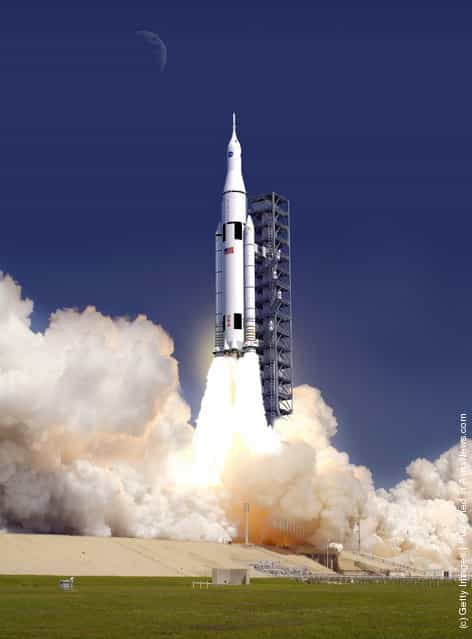
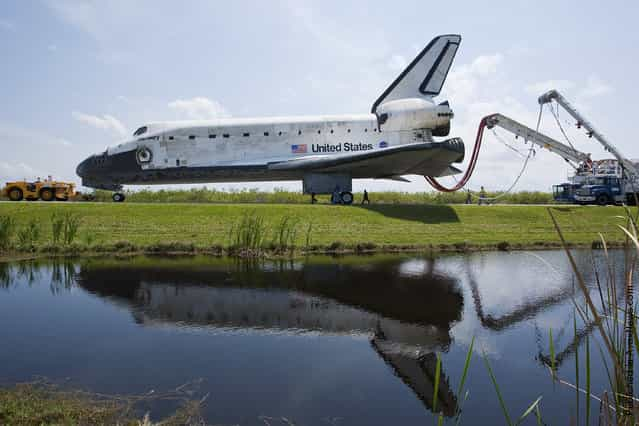

![Rare [Hybrid] Total Solar Eclipse Rare [Hybrid] Total Solar Eclipse](http://img.gagdaily.com/uploads/posts/fact/2013/short/00010c55_medium.jpg)






